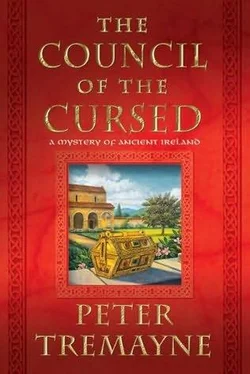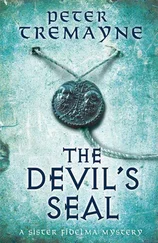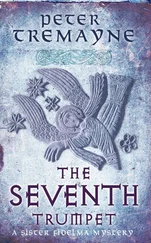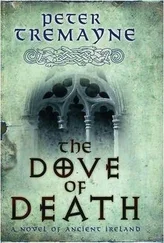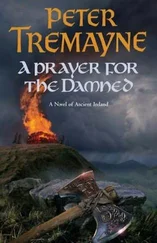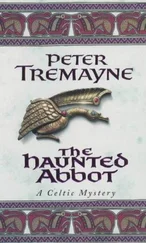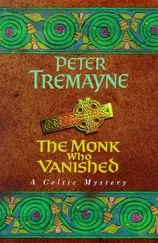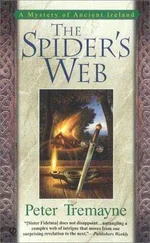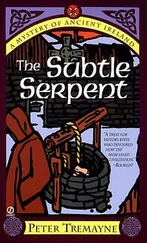Peter Tremayne - The Council of the Cursed
Здесь есть возможность читать онлайн «Peter Tremayne - The Council of the Cursed» весь текст электронной книги совершенно бесплатно (целиком полную версию без сокращений). В некоторых случаях можно слушать аудио, скачать через торрент в формате fb2 и присутствует краткое содержание. Жанр: Исторический детектив, на английском языке. Описание произведения, (предисловие) а так же отзывы посетителей доступны на портале библиотеки ЛибКат.
- Название:The Council of the Cursed
- Автор:
- Жанр:
- Год:неизвестен
- ISBN:нет данных
- Рейтинг книги:4 / 5. Голосов: 1
-
Избранное:Добавить в избранное
- Отзывы:
-
Ваша оценка:
- 80
- 1
- 2
- 3
- 4
- 5
The Council of the Cursed: краткое содержание, описание и аннотация
Предлагаем к чтению аннотацию, описание, краткое содержание или предисловие (зависит от того, что написал сам автор книги «The Council of the Cursed»). Если вы не нашли необходимую информацию о книге — напишите в комментариях, мы постараемся отыскать её.
The Council of the Cursed — читать онлайн бесплатно полную книгу (весь текст) целиком
Ниже представлен текст книги, разбитый по страницам. Система сохранения места последней прочитанной страницы, позволяет с удобством читать онлайн бесплатно книгу «The Council of the Cursed», без необходимости каждый раз заново искать на чём Вы остановились. Поставьте закладку, и сможете в любой момент перейти на страницу, на которой закончили чтение.
Интервал:
Закладка:
The young man flushed. ‘I…I have no wife,’ he muttered. He rose. ‘Perhaps it is time to start the examination?’
Eadulf glanced at Fidelma with an expression that indicated he felt it best to avoid further conversation in that area.
‘Before we start, I think we should like to be shown something of the abbey,’ Fidelma said. ‘It would help us.’
Brother Chilperic looked uneasy. ‘I do not know,’ he said hesitantly.
Fidelma’s brows came together. ‘Come, come, Brother Chilperic. It is useless our being here if we do not know where we are exactly.’
The tour was a cursory one, but at least it helped Fidelma and Eadulf to orientate themselves. The abbey was larger than they had expected and was bounded on two sides by the tall city walls. There appeared to be one main building, then a large chapel and several smaller structures interspersed with little courtyards and gardens. From the anticum , in the main building, they exited into a large courtyard with its entrance to the great chapel on the opposite side. To the south side of the courtyard was a small building entirely on its own which housed the apartments of Bishop Leodegar. Trees of apple, pear, plum and quince surrounded it. Separate to this was the house of the physician, with an infirmary and the physician’s garden for herbs and healing plants.
The main building contained the work rooms of the community-the bakehouse, brewery and kitchens next to the refectory-and beyond that, the latrina were housed at ground level. There was also a common room for the brethren called the calefactorium which, in winter, was heated by flues under the floor fed from the kitchen fires, and next to this was a scriptorium or library. There was also a vestiarium for the storing of clothes, because the warmth of the calefactorium helped preserve them and also kept the manuscript books of the scriptorium at a reasonable temperature.
Above this main building were the dormitoria for the brethren. The individual chambers were for the more senior members of the community. Then there was a second storey with other chambers and the hospitia , which were more ostentatiously furnished for guests of importance.
Brother Chilperic had paused in the main courtyard to point out some of the focal points of the abbey. He spoke with some enthusiasm.
‘We are in a corner of the old city, bounded on two sides by the ancient walls. The western wall runs behind the chapel and the southern wall is beyond the bishop’s house. Beyond the southern wall, through which we have access by means of a gateway into a tunnel made though the wall, we have our farmstead. There are cow sheds, goat sheds, pigsties, sheep, hen and duck houses and another garden for our vegetables-such as garlic, onions, cabbages, lettuce and celery.’
‘And do the brethren take turns in looking after the animals and produce?’ Fidelma asked.
Brother Chilperic shook his head. ‘The farmwork is done by the slaves and supervised by the brethren.’
‘Slaves?’ Her eyes widened.
‘We don’t allow slaves in the abbey,’ went on Brother Chilperic, as if he had not noticed her shocked expression. ‘They only work on the farm. We have twenty field slaves who belong to the abbey.’
‘The chapel is quite spectacular,’ Eadulf remarked, trying to give Fidelma a warning glance not to pursue the matter of slaves again.
Brother Chilperic turned to him with pride and said, ‘It was once a temple of the Romans before being consecrated to the use of the true Faith.’
Attending prayers on the previous evening, they had already observed its large interior. It was a tall building, with a semicircular apse at the southern end in which stood a high altar. It was unlike the churches that Fidelma and Eadulf were used to. To the west of the altar was a smaller one dedicated to Apostle Peter and, on the opposite side, another dedicated to Apostle Paul. The congregation stood before the altar while the officiating priest performed the rituals. There were wooden screens, which they had noticed separated the women from the men. The women from the Domus Femini entered the chapel, apparently by some underground route through the vaults that stretched as far as the Domus Femini , and took their places unseen behind these screens.
Brother Chilperic told them that the Domus Femini stood to the east side of the abbey, separated by a large courtyard and a wagonway. It was up that wagonway that Brother Budnouen had taken his cart to unload his goods when they had arrived on the previous day. These women’s quarters had once been part of the main abbey buildings, but now all other entrances had apparently been blocked off so they were isolated from the brethren of the abbey, apart from the underground passage to the chapel.
Fidelma and Eadulf were certainly impressed by the size of the complex of the abbey. It was like a small town in itself and almost self-sufficient. One could lose oneself quite easily in the numerous halls, chambers and corridors.
A bell started to toll and Brother Chilperic started nervously.
‘I think we should begin your work, for the day is passing rapidly,’ he ventured.
‘We have already begun our work,’ Fidelma said mildly. ‘But let us now see where Abbot Dabhóc met his death.’
Looking relieved, Brother Chilperic set off up the stairs of the main building to the hospitia , but led them to chambers on the far side of the building from where their own were situated. Their guide paused before a door and announced: ‘This was the chamber where Abbot Dabhóc was killed.’
‘And it was Bishop Ordgar’s chamber?’ queried Eadulf.
‘It was,’ replied the steward. He opened the door. There was a single window facing them that lit the room well in spite of the fact that it was facing north across the sprawl of the city. It was not a bright day but the light was enough to reveal a scene that caused them to halt in surprise on the threshold.
‘This room has been ransacked.’ Eadulf stated the obvious.
Bedding was strewn on the floor, blankets and bits of broken furniture were scattered here and there, two cupboard doors hung off their hinges while loose bricks had even been prised out of the wall.
‘Destructive but thorough,’ muttered Fidelma. ‘Someone appears to have been looking for something.’
Brother Chilperic was in a state of shock.
‘It was not done last evening,’ he said.
Fidelma turned to him with a frown. ‘So you looked in this room last evening?’
The steward appeared suddenly awkward.
‘I just…I wanted…wanted to see if it was ready for your inspection.’
Fidelma replied patiently, ‘My inspection was to see if anything had been previously missed. I did not want the room made ready or tidied before it.’
‘Well, you certainly got your wish,’ Eadulf said ruefully, indicating the mess.
A thought struck Fidelma.
‘When exactly did you come here and observe that there was nothing amiss?’
‘When?’
‘You said that this had not happened last evening. What time were you here?’
‘After the evening prayers.’
‘After Bishop Leodegar announced in the chapel that we would be investigating the matter of Dabhóc’s killing?’
‘After that,’ agreed the steward.
Eadulf was nodding thoughtfully. ‘So someone was scared that something might be found…’ he began.
Fidelma silenced him with a sharp look.
‘There is nothing to be gained here,’ she said. ‘If you would be good enough to indicate Brother Sigeric’s chamber or tell us where we might find him? Then I think, as steward, your duty would be to inform the bishop about this matter.’
Читать дальшеИнтервал:
Закладка:
Похожие книги на «The Council of the Cursed»
Представляем Вашему вниманию похожие книги на «The Council of the Cursed» списком для выбора. Мы отобрали схожую по названию и смыслу литературу в надежде предоставить читателям больше вариантов отыскать новые, интересные, ещё непрочитанные произведения.
Обсуждение, отзывы о книге «The Council of the Cursed» и просто собственные мнения читателей. Оставьте ваши комментарии, напишите, что Вы думаете о произведении, его смысле или главных героях. Укажите что конкретно понравилось, а что нет, и почему Вы так считаете.
